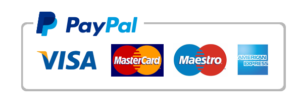Complex Adult Health
NR341 Complex Adult Health
RUA Interdisciplinary Management of Healthcare Technology Guidelines
Purpose
This purpose of this assignment is for the student to present a complete picture of interdisciplinary care using specific therapeutic modalities in the care of a complex adult health client. The student will demonstrate clinical reasoning skills and will discuss interdisciplinary care that had been incorporated and/or anticipated using a healthcare technology or therapeutic modality for the care of the complex health client.
Course outcomes: This assignment enables the student to meet the following course outcomes:
1. Provide patient and family centered nursing care to adults with complex health needs using theories and principles of nursing and related disciplines. (PO 1)
2. Initiate the use of appropriate resources in direct care responsibilities within complex adult health situations. (PO 2)
3. Demonstrate effective therapeutic communication and relationship skills in family centered nursing care to adults with complex health needs. (PO 3)
4. Demonstrate effective clinical decision making based on critical thinking skills and legal, ethical, and professional standards and principles when caring for patients and families with complex adult health needs. (POs 4 and 6)
5. Implement a plan of care for continued personal, professional, and educational development related to nursing practice with complex adult health situations. (PO 5)
7. Use evidence including research findings from nursing and related disciplines to answer clinical questions related to nursing care of patients with complex adult health needs. (PO 8)
Due date: Your faculty member will inform you when this assignment is due. The Late Assignment Policy applies to this assignment.
Total points possible: 100 points
Preparing the assignment
Follow these guidelines when completing this assignment. Speak with your faculty member if you have questions.
1) Choose a therapeutic modality or healthcare technology.
2) Examples of a therapeutic modality include Extracorporeal Membrane Oxygenation, Automatic rotating pronation beds, right and/or left ventricular assist devices, nontraditional ventilator modes.
3) Examples of healthcare technology can include regional O2 saturation monitoring (NIRS).
4) Refer to your faculty member if your selection requires prior approval.
5) Write a 4-5 page paper (not including the title page or reference page) using APA format.
6) For APA, formatting, or grammar assistance visit the APA Citation and Writing page in the online library.
7) Include the following sections (detailed criteria listed below and in the Grading Rubric):
a. Introduction – 5 points/5%
· The chosen therapeutic modality or healthcare technology meets one of the following criteria:
· Has been introduced recently at the bedside for care of the complex adult patient.
· Is a non-traditional modality for very ill patients in special circumstances.
· Is being used in a new way to treat a patient with complex needs.
· Requires specific training above and beyond general entry-level nursing education.
· Introduce the therapeutic modality or healthcare technology.
( NR341 -OL RUA Interdisciplinary Guidelines V 1 ) ( 1 )
NR341 Complex Adult Health
RUA Interdisciplinary Management of Healthcare Technology Guidelines
· Name the therapeutic modality or healthcare technology.
· A brief fictional case is used to illustrate the therapeutic modality or healthcare technology.
b. Explanation and Background– 15 points/15%
· Include a clear description of the therapeutic modality or healthcare technology.
· Discuss how the therapeutic modality or healthcare technology works.
· Describe the patient population it is used for.
· Include medication, safety, and cost considerations as applicable.
c. Risks and Benefits– 15 points/15%
· Describe how the therapeutic modality or healthcare technology can benefit the patient.
· Discuss ways to promote positive outcomes.
· Explain the complications that may arise.
· Discuss considerations for preventing complications.
d. Interdisciplinary team’s Roles and Responsibilities– 20 points/20%
· Identify all interdisciplinary team members caring for the patient, such as respiratory therapy, assistive personnel, providers, case managers, clinical nurse specialists, and researchers.
· Describe the roles and responsibilities of each member of the healthcare team that is involved in the use of the therapeutic modality or healthcare technology.
· Discuss the roles and responsibilities of the nurse as a member of the interdisciplinary team caring for the patient.
e. Nursing Scope of Practice – 15 points/15%
· Discuss the knowledge needed for the Registered Nurse to provide care for the patient using the therapeutic modality or healthcare technology.
· Describe skills needed for the Registered Nurse to provide care for the patient using therapeutic modality or healthcare technology.
· Discuss attitudes needed for the Registered Nurse to provide care for the patient using therapeutic modality or healthcare technology.
f. Patient Education – 20 points/20%
· Describe the information to be taught to the patient and/or family.
· Discuss how information will be taught.
· Explain how the effectiveness of the teaching will be evaluated.
g. Conclusion – 5 points/5%
· Provide a summary of the paper.
· No new information is introduced.
· Include additional resources for further learning.
h. APA Style and Organization – 5 points/5%
· References are submitted with paper.
· Uses current APA format and is free of errors.
· Grammar and mechanics are free of errors.
· At least three (3), nursing, scholarly, peer reviewed, primary sources from the last 5 years, excluding the textbook, are provided.
Please note that your instructor may provide you with additional assessments in any form to determine that you fully understand the concepts learned.
( NR341-OL RUA Interdisciplinary Guidelines V1 ) ( 2 )
Criteria are met when the student’s application of knowledge within the paper demonstrates achievement of the outcomes for this assignment.
| Assignment Section and Required Criteria (Points possible/% of total points available) | Highest Level of Performance | High Level of Performance | Satisfactory Level of Performance | Unsatisfactory Level of Performance | Section not present in paper |
| Introduction (5 points/5%) | 5 points | 4 points | 3 points | 2 points | 0 points |
| Required criteria 1. The chosen therapeutic modality or healthcare technology meets one of the following criteria: · Has been introduced recently at the bedside for care of the complex adult patient. · Is a non-traditional modality for very ill patients in special circumstances. · Is being used in a new way to treat a patient with complex needs. · Requires specific training above and beyond general entry-level nursing education. 2. Introduce the therapeutic modality or healthcare technology. 3. Name the therapeutic modality or healthcare technology. 4. A brief fictional case is used to illustrate the therapeutic modality or healthcare technology. | Includes no fewer than 4 requirements for section. | Includes no fewer than 3 requirements for section. | Includes no less than 2 requirements for section. | Includes no less than 1 requirement for section. | No requirements for this section presented. |
| Explanation and Background (15 points/15%) | 15 points | 13 points | 11 points | 6 points | 0 points |
| Required criteria 1. Include a clear description of the therapeutic modality or healthcare technology. 2. Discuss how the therapeutic modality or healthcare technology works. 3. Describe the patient population it is used for. 4. Include medication, safety, and cost considerations as applicable. | Includes no fewer than 4 requirements for section. | Includes no fewer than 3 requirements for section. | Includes no fewer than 2 requirements for section. | Includes no less than 1 requirement for section. | No requirements for this section presented. |
( NR341 Complex Adult Health RUA Interdisciplinary Management of Healthcare Technology Guidelines )
( NR341-OL RUA Interdisciplinary Guidelines V1 ) ( 3 )
| Risks and Benefits (15 points/15%) | 15 points | 13 points | 11 points | 6 points | 0 points |
| Required criteria 1. Describe how the therapeutic modality or healthcare technology can benefit the patient. 2. Discuss ways to promote positive outcomes. 3. Explain the complications that may arise. 4. Discuss considerations for preventing complications. | Includes no fewer than 4 requirements for section. | Includes no fewer than 3 requirements for section. | Includes no less than 2 requirements for section. | Includes no less than 1 requirement for section. | No requirements for this section presented. |
| Interdisciplinary Team’s Roles and Responsibilities (20 points/20%) | 20 points | 18 points | 16 points | 8 points | 0 points |
| Required criteria 1. Identify all interdisciplinary team members caring for the patient, such as respiratory therapy, assistive personnel, providers, case managers, clinical nurse specialists, and researchers. 2. Describe the roles and responsibilities of each member of the healthcare team that is involved in the use of the therapeutic modality or healthcare technology. 3. Discuss the roles and responsibilities of the nurse as a member of the interdisciplinary team caring for the patient. 4. Discuss one challenge in working with an interdisciplinary team. | Includes no fewer than 4 requirements for section. | Includes no fewer than 3 requirements for section. | Includes no less than 2 requirements for section. | Includes no less than 1 requirement for section. | No requirements for this section presented. |
| Nursing Scope of Practice (15 points/15%) | 15 points | 13 points | 6 points | 0 points | |
| Required criteria 1. Discuss the knowledge needed for the Registered Nurse to provide care for the patient using the therapeutic modality or healthcare technology. 2. Describe skills needed for the Registered Nurse to provide care for the patient using therapeutic modality or healthcare technology. 3. Discuss attitudes needed for the Registered Nurse to | Includes no fewer than 3 requirements for section. | Includes no fewer than 2 requirements for section. | Includes no less than 1 requirement for section. | No requirements for this section presented. |
| provide care for the patient using therapeutic modality or healthcare technology. | |||||
| Patient Education (20 points/20%) | 20 points | 18 points | 16 points | 8 points | 0 points |
| Required criteria 1. Describe the information to be taught to the patient and/or family. 2. Discuss how information will be taught. 3. Discuss potential cultural considerations to teaching 4. Explain how the effectiveness of the teaching will be evaluated. | Includes no fewer than 4 requirements for section. | Includes no fewer than 3 requirements for section. | Includes no less than 2 requirements for section. | Includes no less than 1 requirement for section. | No requirements were met for this section. |
| Conclusion (5 points/5%) | 5 points | 3 points | 2 points | 0 points | |
| Required criteria 1. Provide a summary of the paper. 2. No new information is introduced. 3. Include additional resources for further learning. | Includes no fewer than 3 requirements for section. | Includes no fewer than 2 requirements for section. | Includes no less than 1 requirement for section. | No requirements for this section presented. | |
| APA Style and Organization (5 points/5%) | 5 points | 4 points | 3 points | 2 points | 0 points |
| Required criteria 1. References are submitted with paper. 2. Uses current APA format and is free of errors. 3. Grammar and mechanics are free of errors. 4. At least three (3), nursing, scholarly, peer reviewed, primary sources from the last 5 years, excluding the textbook, are provided. | Includes no fewer than 4 requirements for section. | Includes no fewer than 3 requirements for section. | Includes no less than 2 requirements for section. | Includes no less than 1 requirement for section. | No requirements for this section presented. |
| Total Points Possible = 100 points |


